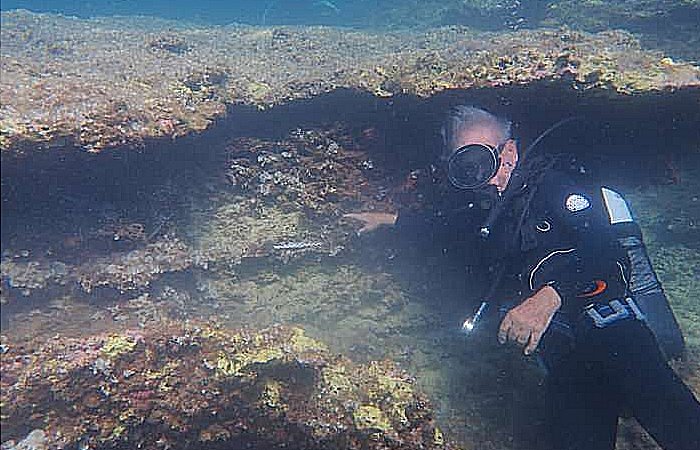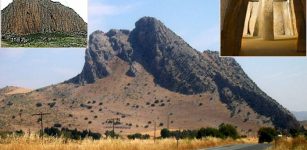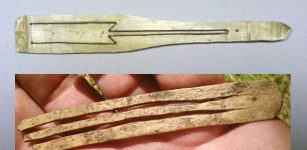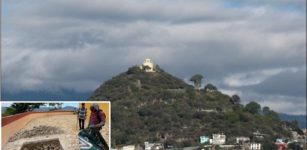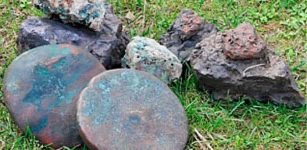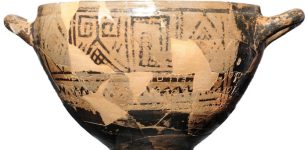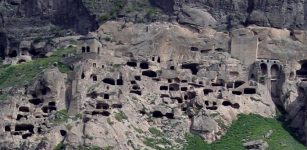Early Expansion Of Homo sapiens: Underwater Caves Give New Clues About Sicily’s First Residents
Conny Waters - AncientPages.com - Coastal and underwater caves in southern Sicily hold key clues about early human migration to the island, according to Washington University scientists' archaeological surveys.
Findings may explain the early expansion of Homo sapiens into Mediterranean islands.
Coastal and underwater cave sites in southern Sicily contain important new clues about the path and fate of early human migrants to the island, according to a new study in PLOS ONE. Some of the sites are above ground, while others are submerged caves and hidden grottos accessible only by sea. Credit: Ilaria Patania
A new study examines 25 caves and rock shelters, mostly identified between 1870 and the 1990s but largely forgotten. The authors also conducted land and underwater surveys in unexplored coastal areas, uncovering three new sites with potentially important archaeological sediments.
"What we are looking for is not just the first person who arrived, but the first community," said Ilaria Patania, an assistant professor of archaeology in Arts & Sciences. "Understanding the timing of the initial colonization of Sicily provides key data for the pattern and mode of the early expansion of Homo sapiens into the Mediterranean."
Sicily is thought to be the first island in the region permanently occupied by human ancestors, but when and how they arrived is unknown. Although Sicily is less than two miles from mainland Italy, early humans would have faced a difficult water crossing. Previous studies have predominantly concentrated on identifying potential entry points located on the island’s northern side.
"This research shows that new ways of thinking and looking can reveal patterns that weren't visible before," said T.R. Kidder, the Edward S. and Tedi Macias Professor of anthropology in Arts & Sciences at WashU, a co-author of the new study.
"Previous scholars assumed that sites on the southern coast of Sicily would be eroded or too damaged to yield useful information," Kidder said. "But finding underwater sites opens up a whole new terrain to study. It allows us to reconsider routes of migration of these earliest modern human ancestors."
Dangerous water crossing
Sicily, the largest Mediterranean island, is located just off the "toe" of Italy's boot.
WashU archaeologists are investigating coastal and underwater caves in southeastern Sicily, tracing early human dispersal onto the island. Credit: Ilaria Patania
In the ancient Greek epic "The Odyssey," Homer narrates the journey of Odysseus as he navigates his ship past the mythical sea creatures Scylla and Charybdis while crossing the Strait of Sicily.
Historically, sailors were familiar with this strait and often attributed its dangerous waves and whirlpools to formidable monsters. Today, this strait remains a significant passageway, with thousands of migrants from North Africa attempting to cross it annually.
Unfortunately, many do not succeed in their journey, with some vessels capsizing just a few hundred meters from reaching land.
Patania, a native of the island of Sicily, has a deep respect for the power of the sea. Her grandfather was a fisherman who worked on the same shores she now studies.
"Very early on, I was taught that the sea can be a great resource," she said. "At the same time, you never turn your back on the sea. The sea can be very dangerous."
This idea plays out in her research. "I'm very interested in how humans occupy marginal environments," Patania said. "These are environments where if everything goes well, we are in perfect harmony with nature. But if something changes -- and this could be something like global climate change, or something smaller, like the arrival of a new animal -- it could be a catastrophe."
Scholars agree humans reached Sicily 16, 000 years after the last glacial maximum. This date is puzzlingly late, as humans dispersed into Siberia about 30, 000 years earlier. The discrepancy has prompted some researchers to question whether humans may have arrived in Sicily significantly earlier than the currently accepted dates suggest.
Also, no one yet knows whether humans arrived on Sicily by seafaring, or by foot over a land bridge -- or even what direction they came from.
WashU archaeologists have recovered and analyzed stone tools and other items of interest from underwater caves and other coastal sites in southern Sicily. Credit: Ilaria Patania
"A challenge for understanding the spread of early modern human ancestors is that we don't fully understand how they spread and colonized the world at a very early stage," Kidder said. "As Ilaria says, this is a very marginal environment. Did folks come down from Italy and cross the Straits of Messina, or did they come from the south along the African coast? Or, is it possible that they were island hopping across the Mediterranean? Locating sites on the south coast helps us consider pathways and thus modes of behavior."
Eyes on the sea
Patania leads a long-term research project focused on the early occupation of Sicily. "In southeast Sicily, very few Upper Paleolithic sites have been excavated and analyzed using scientific methods," she said.
"Our project is still in its early stages, but already we have identified and assessed over 40 sites of interest, of which about 17 are sites that have been relocated with greater precision based on older identifications," Patania said.
She and her team prepared for their recent cave explorations by poring through the archives of local town libraries in Sicily, reading historical bulletins and news articles as far back as the 19th century.
The researchers identified potential sites, reviewed records and photographs from local amateur archaeologists, interviewed workers from earlier excavations, and talked with local divers and fishermen. For example, one of the co-authors on the new study is a retired tugboat captain. He has no formal scientific training, but he spent decades working on the decks of boats in and around the Port of Augusta.
"The moment I said that I was looking for paleosols, and that paleosols look like clay dirt that could be red or gray underwater, he said, 'I know exactly what you are looking for,'" Patania said.
Patania also partnered with the superintendent of cultural and natural heritage of Siracusa and Ragusa (two provinces of Sicily) and the superintendent of the sea of Sicily to locate and recruit other local experts and stakeholders.
As the research has progressed, Patania also has spoken with officers in the Italian navy about training members of their specialized dive team to help identify underwater archaeological features. These divers spend a lot of time in local waters completing their regular tasks related to clearing ordnance and other debris from World War II.
"We've started with the area close to the coast, and we're slowly going to move further out in the years to come," Patania said.
Excavations continue
Two of the new sites in the PLOS ONE study may contain Upper Paleolithic human occupation traces, including fossil fauna, study authors said.
Corruggi is located at the southernmost tip of Sicily. The site was originally identified by other researchers in the 1940s.
"This site is where a second land bridge would have connected this island with the island of Malta. When we inspected this site, we found teeth from a European wild ass and stone tools," said Patania.
"Analyzing the remains from this site might give us insight on the very last leg of the human journey south into the southernmost coast of Sicily and off toward Malta."
During summer 2024, project team members worked on excavating the second site, a cave called Campolato.
"Here we have discovered evidence for sea-level changes caused by the last glaciation and a localized earthquake that we are still investigating," the researcher explained.
"We hope to reconstruct not only the timing of human occupation, but also the environment these people lived in and how they negotiated with natural events like earthquakes, climatic and environmental changes and maybe even volcanic eruptions," she said.
Paper - DOI: 10.1371/journal.pone.0299118
Written by Conny Waters - AncientPages.com Staff Writer

